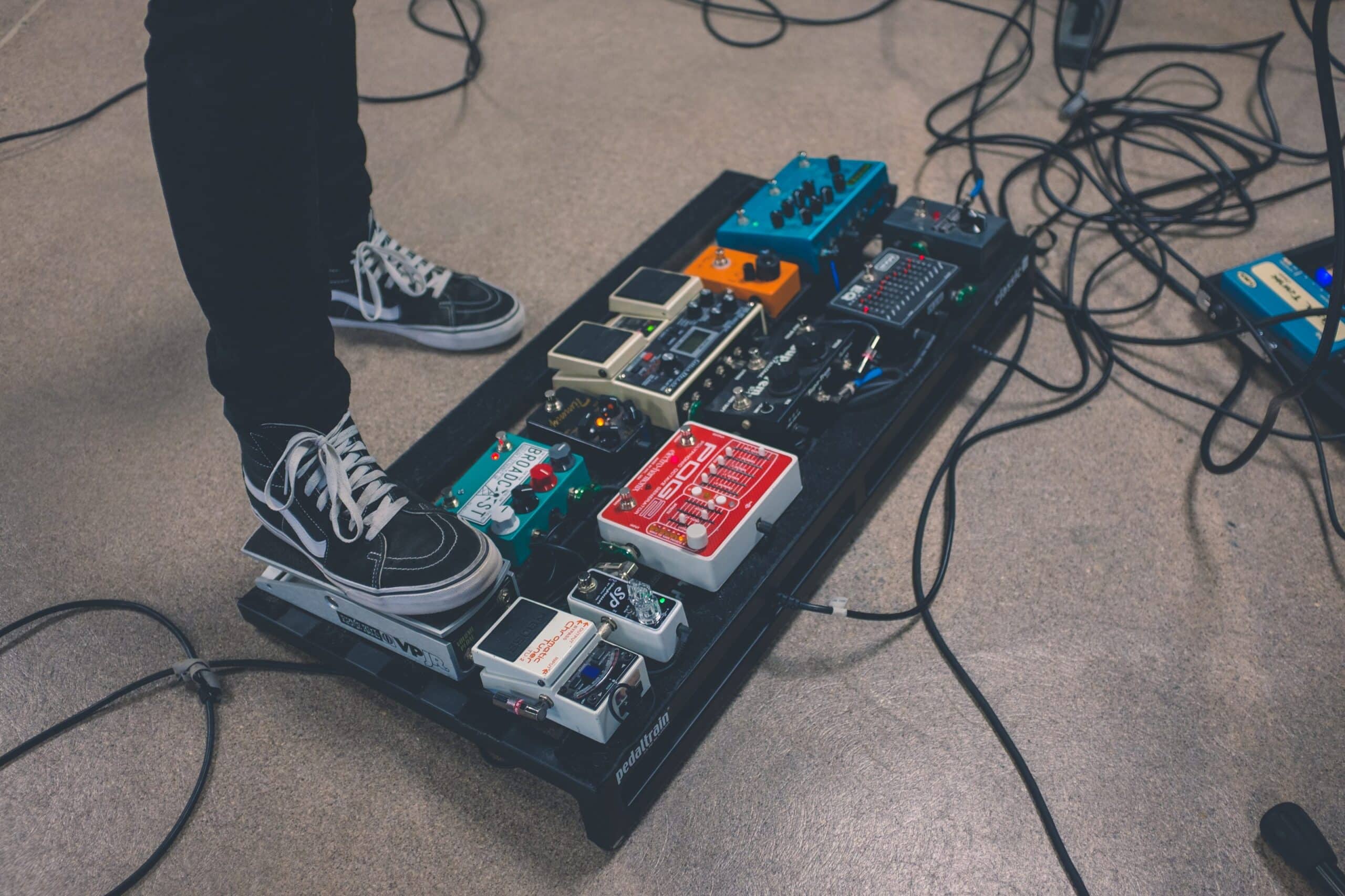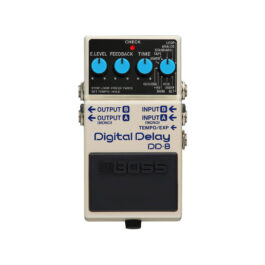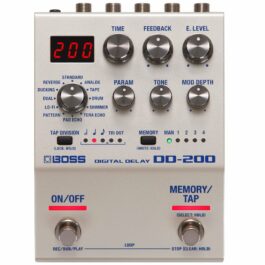
Delay pedals are undoubtedly one of the most essential components to a guitar effects pedal board. Providing the basis for some of the most iconic guitar parts in history, and serving multitudes of practical functions in tone creation, any pedal board would be incomplete without a delay pedal.
Delay pedals, of course, come in a number of shapes and sizes, and offer a seemingly endless array of different feature combinations. This can be daunting when you’re just trying to figure things out. We’re going to try help out by explaining a few things, from the very basis of what delay is, and what some popular features and terms mean, and what they can do.
What is Delay?
Simply put, a delay effect takes your guitar sound, and repeats it according to set parameters. Your original signal will still come through, but it will be followed by a repeated instance of that signal a set amount of time later. This can be repeated a number of times, ad infinitum, in fact, dependent on your set parameters.

Delay Time (Delay Block):
This is the simplest parameter, and simply sets the amount of time it will take for a single repeat to take place. This is usually measured in milliseconds, or beat divisions (ie: ¼ notes, 1/8 notes etc. in relation to tempo)
Feedback (Feedback Loop):
The Feedback sets how many times, or for how long the signal will repeatedly be sent back through the loop and repeated.
Effect Level (Mix Block):
This simply sets how loud the delayed signal will be in relation to your original signal.
Delay Types
These days there are many different forms of delay. Here are some of the most popular.
Analog/Tape Delay:
The original form of delay was the tape delay, wherein delay was produced by quickly recording, playing back, and deleting audio on tape. This had a very particular analog sound, which is now most commonly found as an emulation on digital devices.
Digital Delay:
The most common modern form of delay which digitally replicates the signal in order to repeat it.
Slapback Delay:
Very common in the 50’s, this describes a very short delay that is repeated only once.
Stereo Delay:
Allows stereo manipulation of the delayed signal to achieve things like a ping pong effect, where each repetition can be panned to opposing sides of the stereo field.
Experimentation with delay has brought about many popular modern sounds. A good, modern digital delay can provide endless possibilities, and of course, a traditional analog delay will provide the most authentic recreation of the iconic sound of yesteryear.
Shop delay effect pedals now...
-
Birthday Sale Deal!
- Guitar & Bass, Guitar Compact Pedals, Guitar Effects
Boss DD-8 Digital Delay Effects Pedal
-
R5,250R4,200FREE DELIVERY - Select options
-
Birthday Sale Deal!
- Guitar & Bass, Guitar Compact Pedals, Guitar Effects
Boss DD-200 Digital Delay Effects Pedal
-
R9,195R6,435FREE DELIVERY - Select options










